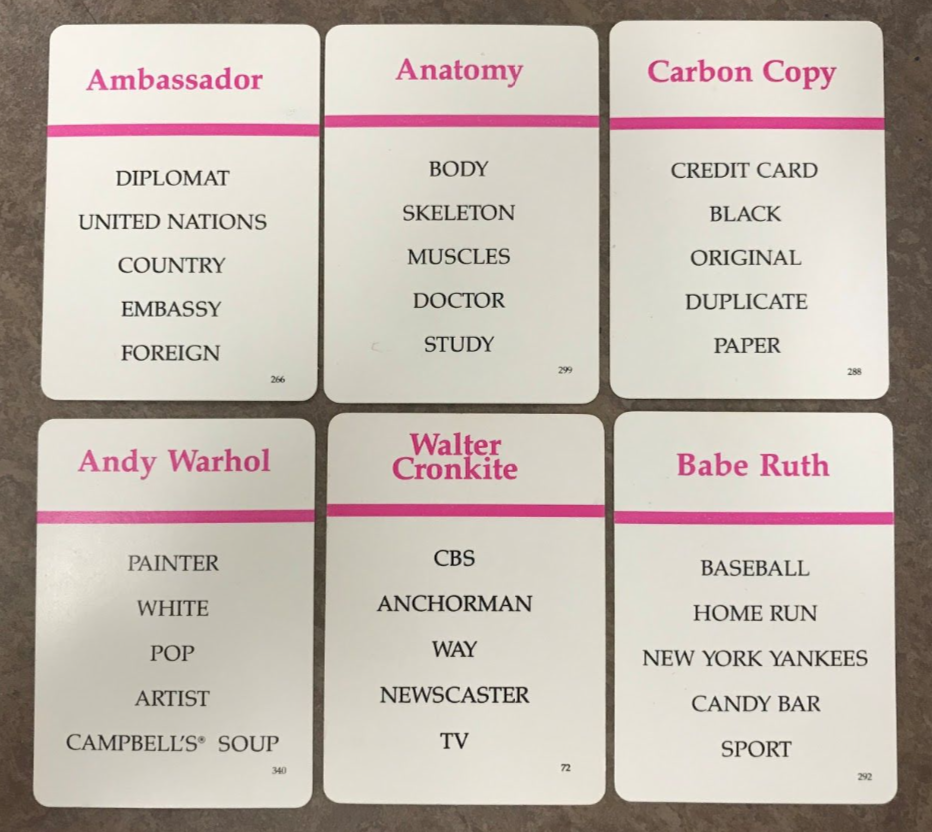Taboo

Taboo is a guessing game where you try describe a word to your team without saying the banned, or "taboo" words related to it. Due to the nature of Taboo as a party game, the student looked for ways to maximize player enjoyment while removing elements that caused players to have negative feelings.
Exploding Kittens

One aspect of emotional accessibility that students noted was the way certain games often resulted in groups of players ganging up on a single player, leading to bad feelings for that singled-out player. Therefore, students who redesigned for emotional accessibility often looked for ways to encourage players to keep everyone in the game longer.
Splendor

Sometimes a student was able to identify a specific accessibility issue in a game that they couldn't fix without changing the game entirely, but they still wanted to discuss its impact from an accessibility standpoint. I believe this student hit on one of the key aspects of the entire project: games are meant to be enjoyed and the best way to achieve emotional accessibility (among other types of accessibility) is to play with others who will strive to make all players able to experience and enjoy the game.
 Lens: Visual
Lens: Visual

